How long to cook boneless chicken thighs on stove
I. Introduction
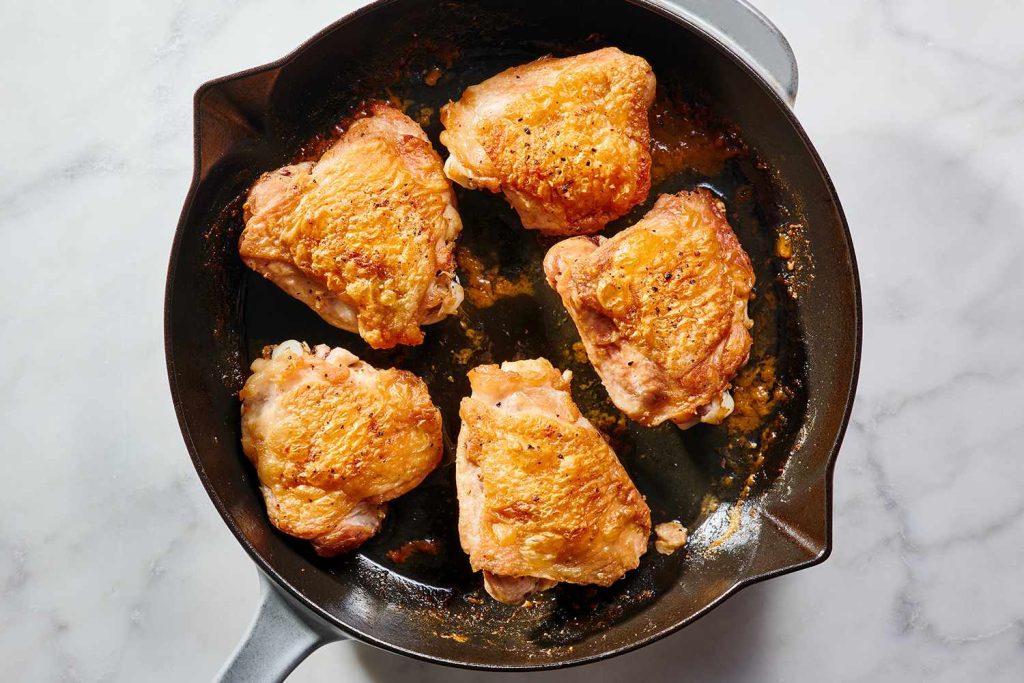
A. Introduction to cooking boneless chicken thighs on the stove Cooking boneless chicken thighs on the stove is a versatile and convenient method that yields tender, juicy, and flavorful results. It allows for precise control over the cooking process, making it a popular choice for many home cooks.
B. The benefits of cooking chicken thighs on the stove Cooking chicken thighs on the stove offers several advantages, including quicker cooking times, even heat distribution, and the ability to achieve a crispy and golden exterior. Stovetop cooking also allows for the development of rich flavors and can easily be adjusted to fit different recipes and flavor profiles.
C. Overview of the step-by-step guide to achieving perfectly cooked chicken thighs This article will provide a detailed step-by-step guide on how to cook boneless chicken thighs on the stove. From preparing the chicken thighs to choosing the right pan and heat level, we will cover everything you need to know to achieve perfectly cooked chicken thighs.
II. Preparing the Chicken Thighs
A. Selecting high-quality boneless chicken thighs
Choose boneless chicken thighs that are fresh, preferably from a reliable source. Look for thighs that are plump, firm, and free from any unpleasant odors. Opting for organic or free-range chicken thighs can also enhance the flavor and quality of the final dish.
B. Seasoning options and marinating tips
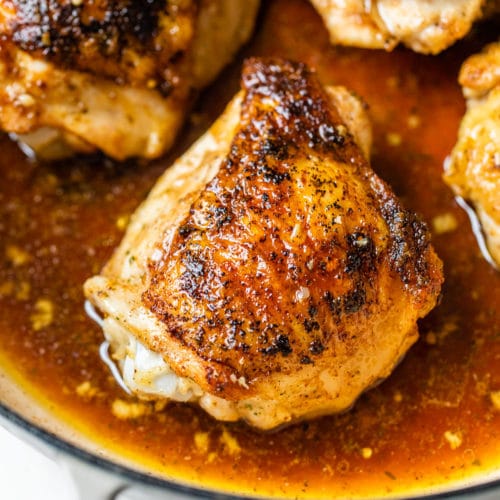
- Dry rubs and spice blends Season the chicken thighs with a dry rub or spice blend of your choice. Common seasonings can include a mix of salt, pepper, garlic powder, paprika, and herbs like thyme or rosemary. Massage the seasonings into the chicken thighs to ensure even flavor distribution.
- Marinating for enhanced flavor (optional) Marinating the chicken thighs can add an extra layer of flavor. Create a marinade using ingredients such as olive oil, vinegar, citrus juice, soy sauce, or yogurt, along with your preferred spices and herbs. Allow the chicken thighs to marinate in the refrigerator for at least 30 minutes or up to overnight for a more intense flavor.
III. Cooking the Chicken Thighs on the Stove
A. Choosing the right pan and heat level
Select a heavy-bottomed skillet or frying pan that can distribute heat evenly. A non-stick pan is recommended to prevent the chicken from sticking and to make clean-up easier. Adjust the heat level to medium-high to create a seared and golden crust on the chicken thighs.
B. Step-by-step instructions for stovetop cooking
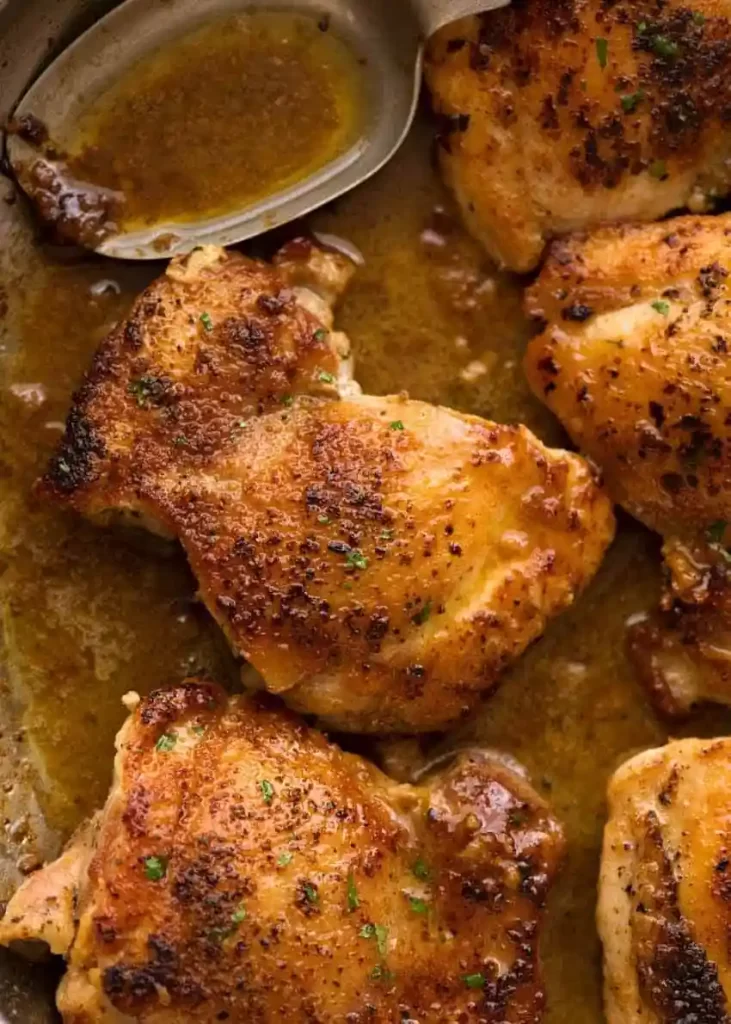
- Preheating the pan and adding oil Place the pan over medium-high heat and allow it to preheat for a few minutes. Add a small amount of cooking oil, such as vegetable or olive oil, and swirl it around to coat the bottom of the pan evenly.
- Searing the chicken thighs Place the seasoned and marinated chicken thighs into the hot pan, skin-side down, if applicable. Allow the thighs to sear undisturbed for about 4-5 minutes or until they develop a golden crust. Flip the thighs over using tongs or a spatula and sear the other side for an additional 4-5 minutes.
- Reducing heat and cooking until desired doneness Once both sides are seared, reduce the heat to medium-low to prevent the chicken from burning or drying out. Continue cooking the chicken thighs for approximately 10-15 minutes, or until they reach an internal temperature of 165°F (74°C) using a meat thermometer. Cooking times may vary depending on the thickness of the chicken thighs.
IV. Determining the Cooking Time
A. Factors that affect cooking time
When cooking boneless chicken thighs on the stovetop, several factors can influence the cooking time required.
- Size and thickness of the chicken thighs: Thicker chicken thighs will require more cooking time than thinner ones. Uniformly sized chicken thighs will help ensure even cooking.
- Heat intensity: The level of heat used during cooking will affect the cooking time. Higher heat levels will cook the chicken thighs faster, while lower heat levels will require more time.
B. Using a meat thermometer to ensure doneness
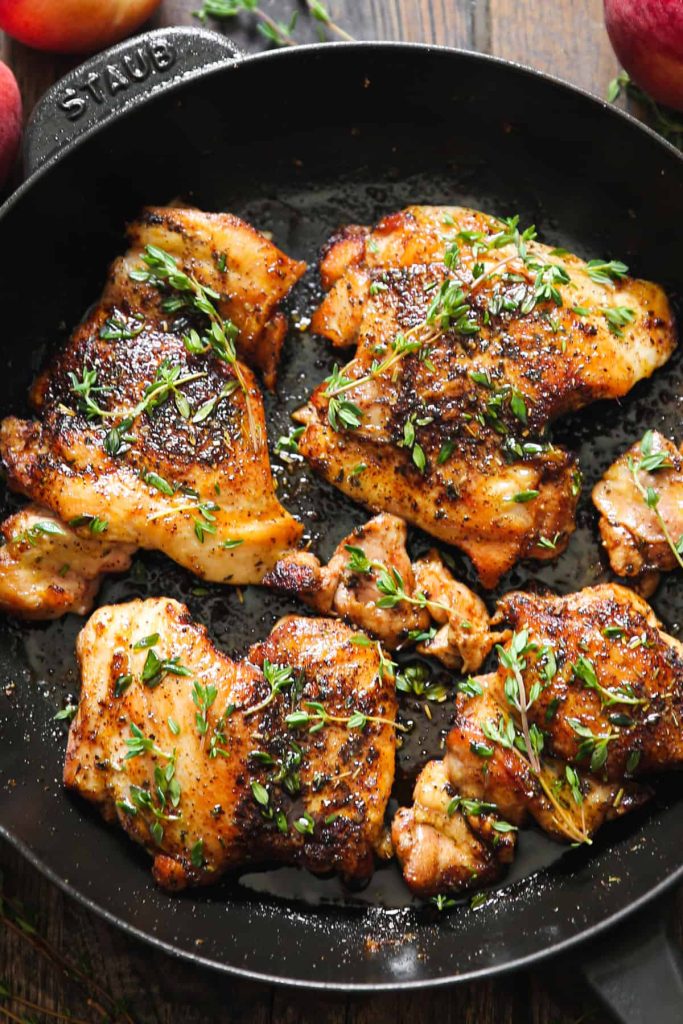
To ensure that your boneless chicken thighs are cooked to perfection, it is advisable to use a meat thermometer. This kitchen tool allows for precise measurements of the internal temperature of the chicken. The USDA recommends that poultry, including chicken, should reach an internal temperature of 165°F (74°C) to ensure it is safe to eat.
C. Approximate cooking times for different levels of doneness
While cooking times can vary depending on the factors mentioned above, here are some approximate cooking times for boneless chicken thighs on the stovetop:
- Thin boneless chicken thighs: Cook for 3-4 minutes per side over medium-high heat for a total cooking time of 6-8 minutes.
- Thick boneless chicken thighs: Cook for 5-7 minutes per side, reducing the heat to medium-low, for a total cooking time of 10-14 minutes. Note: These are simply guidelines, and it is crucial to use a meat thermometer to ensure that the chicken thighs reach the safe internal temperature of 165°F (74°C) for doneness.
V. Resting and Serving the Chicken Thighs
A. Importance of resting the cooked chicken thighs
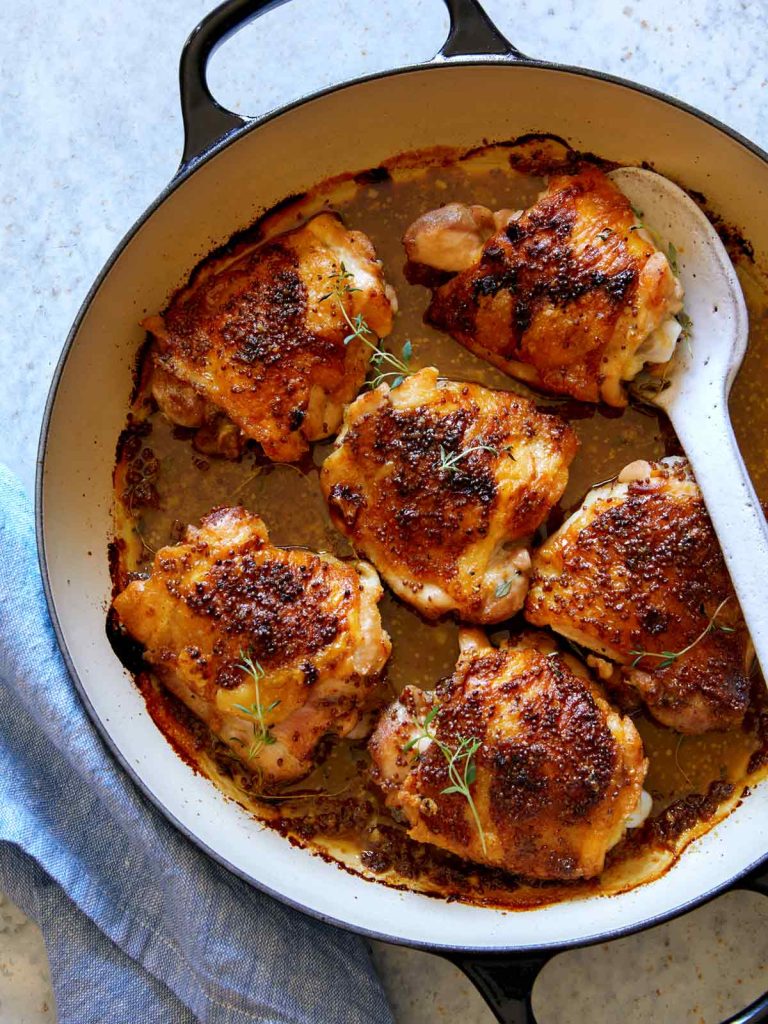
Allowing the cooked chicken thighs to rest before serving is vital for several reasons. Resting allows the juices to redistribute throughout the meat, resulting in a juicier and more flavorful final dish. It also helps to retain moisture, preventing dry and overcooked chicken.
B. Tips for serving and presentation
- Slicing or serving whole Decide whether you want to serve the boneless chicken thighs whole or sliced. Slicing the chicken thighs can make them easier to eat and provide a more attractive presentation. However, serving them whole can be visually appealing as well.
- Pairing suggestions for side dishes and sauces Boneless chicken thighs pair well with a variety of side dishes and sauces. Some popular options include:
- Side dishes: Roasted vegetables, mashed potatoes, rice pilaf, green salad, or grilled corn on the cob.
- Sauces: Barbecue sauce, teriyaki sauce, lemon butter sauce, honey mustard, or chimichurri sauce. Consider marinating the chicken thighs in the sauce before cooking for even more flavor.
VI. Conclusion
In conclusion, cooking boneless chicken thighs on the stovetop requires considering factors such as size, heat intensity, and using a meat thermometer for doneness. Following approximate cooking times and allowing the cooked chicken thighs to rest ensures a moist and delicious final dish. Whether served whole or sliced, boneless chicken thighs are versatile and can be paired with a variety of side dishes and sauces for a satisfying meal. By following these tips, you can confidently create perfectly cooked boneless chicken thighs on the stovetop that will impress your family and friends.
